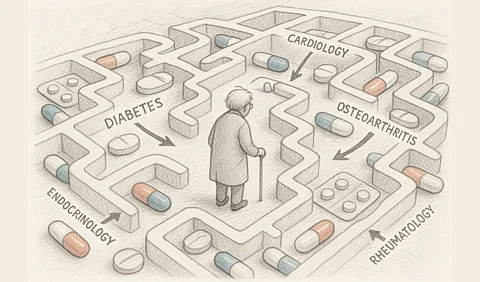2. Pharmacokinetic and Pharmacodynamic Vulnerabilities in the Elderly
Elderly patients experience substantial adjustments in drug absorption, distribution, metabolism, and excretion, which requires age-aware therapeutic practices.
The necessary acidic medium for drugs such as calcium carbonate, iron salts, and certain antifungal drugs faces reduced bioavailability because of decreased splanchnic blood flow and gastric acid secretion.
The total body water reduction, together with decreased lean mass and increased body fat, creates changes to the drug distribution volume (Vd). The deposition of diazepam, amiodarone, and antipsychotic medications in adipose tissue results in a prolonged drug half-life and an increased potential for harmful side effects.
The Phase I enzymatic activities leading to oxidation and reduction show greater impairment in contrast to Phase II conjugation functions. Physical decline in hepatic blood flow, combined with decreased levels of cytochrome P450 enzymes, leads to reduced drug elimination of theophylline, verapamil, and warfarin, which creates higher risks for drug accumulation.
After age 40, renal clearance declines by about 1% each year, even in the absence of overt kidney disease. Creatinine measurements in serum may not reflect muscle loss in aged patients, necessitating the use of eGFR or creatinine clearance (e.g., Cockcroft-Gault) to determine proper medication dosages. Proper adjustment of medications that kidneys eliminate from the body is essential to prevent drug overdose of digoxin, lithium, aminoglycosides, and DOACs.
Pharmacodynamic sensitivity is also heightened. The consumption of benzodiazepines leads to significant cognitive impairment as well as an increased risk of falls, even when taken in small doses. The drug sensitivity of older adults makes them react strongly to anticholinergic agents, so brief exposure to these drugs results in confusion, urinary retention, and risk of delirium.


